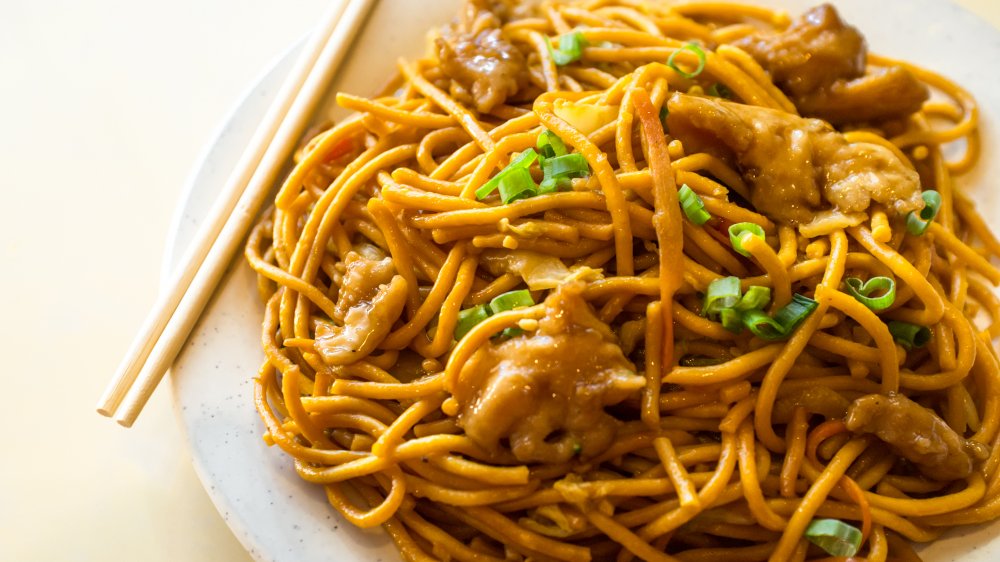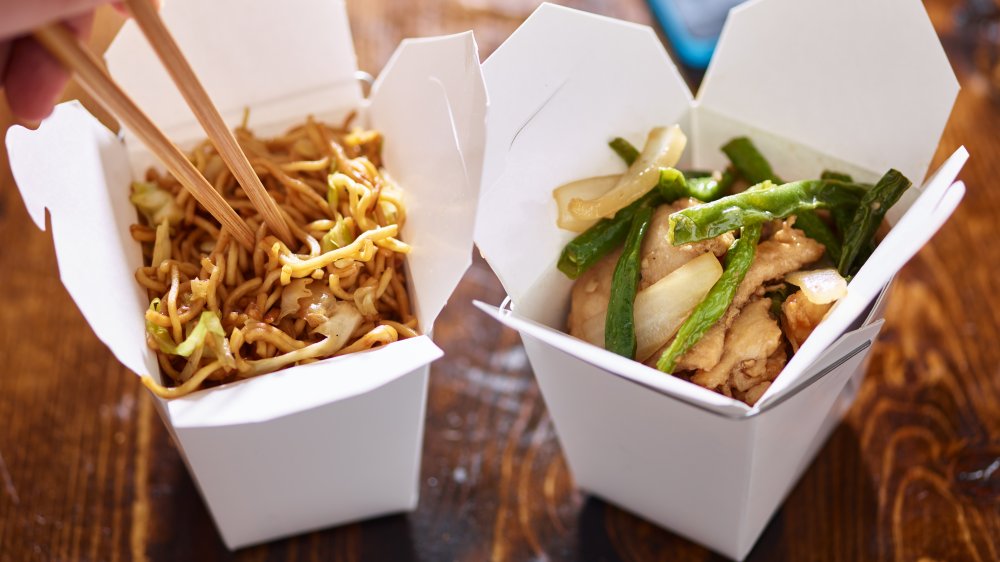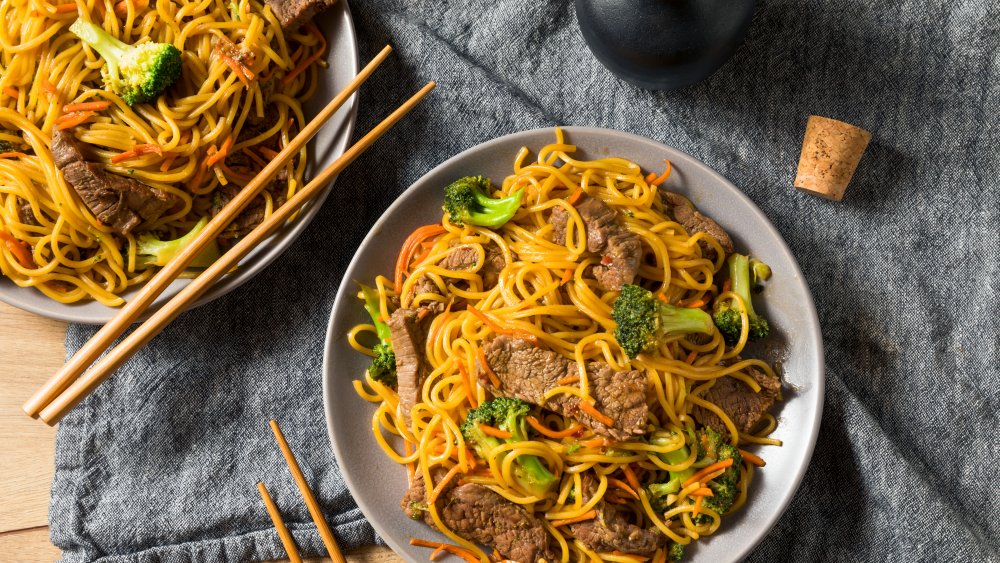The Real Reason You Shouldn't Order Lo Mein At A Chinese Restaurant
Lo mein and chow mein begin the same way... as Chinese egg noodles, which measure about a quarter-inch thick, and can be bought dried or fresh. While chow mein is best prepared with dried noodle so it retains that bit of crunch, a good lo mein needs softer, more pliable noodles, making fresh noodles a better choice for the latter dish. Fresh noodles used in lo mein need to be boiled for about 2-3 minutes so they become al dente, and before they can be added to vegetables and meat to create one of America's favorite Chinese noodle dishes (via The Spruce Eats).
Lo mein is prepared by putting together the noodles with a meat of your choice and different vegetables, then topping or stirring in a sauce that's usually made with different types of soy sauce (light and dark), perhaps a bit of sugar, perhaps a bit of sesame oil (via Pinch of Yum). The best lo mein lives and dies on its sauce, so you can be sure restaurants that serve lo mein will pull out all the stops to make sure the dish is set to wow. Unfortunately, this is where the problem lies.
Lo mein is chock-full of sodium
Regular soy sauce contains 1,000 mg of sodium per tablespoon (via WH Foods) and is used heavily in Chinese-inspired American stir-fries. Many Chinese restaurants lean on the regular stuff over the low sodium soy sauce, which contains as much as 40 percent less salt (via Kikkoman). And because lo mein needs quite a bit of sauce, you can bet that the best-tasting restaurant lo mein will use glugs of soy sauce to flavor their noodle dishes. The amount of sodium in an order of lo mein differs from restaurant to restaurant, but at P.F. Chang's, you'd be looking to take on a sodium load of between 3,540 mg (lo mein vegetable) to 4,170 mg (lo mein shrimp) per order. With the RDV for sodium at no more than 2,300 mg per day (via Verywell Fit), even if you were to share that dish with three other people, you'd still be looking at taking in over 1,000 mg of sodium from one portion alone... and we know that that's not how Chinese food works.
That's not all. A full order of lo mein combo from P.F. Chang's packs 20 grams of sugar per serving; and that doesn't change too much, even if you order the lo mein made with just beef, chicken, pork, shrimp, or vegetables; so getting lo mein at a restaurant also opens you up to the possibility of taking in more sugar you definitely need, since you shouldn't be eating more than 50 grams of the sweet stuff per day. One order of lo mein and you're almost halfway there.
You're better off making lo mein at home
It's an unfortunate fact that if lo mein is made at home, it would still have (approximately) the same amount of carbs that you'd consume from a restaurant lo mein (because noodles), but experts at Livestrong say you can tweak the Chinese food you cook it at home, so it becomes a healthier version of the dish that you enjoy in restaurants — and the same would be true of lo mein.
Swapping regular soy sauce for its low sodium version is one easy way to make homemade lo mein a healthier option. Aside from the obvious benefit of taking in far less sodium per dish of lo mein, Livestrong also says that doing so will eventually train your taste buds to prefer the less salty version. Plus, think of how much money you'll save on takeout by making your own lo mein at home. According to Fast Food Menu Prices a plate of P.F. Chang's lo mein will set you back around $10-$12, and you can bet that you'd be able to make the dish several times over for that price in ingredients. It's a win-win.


